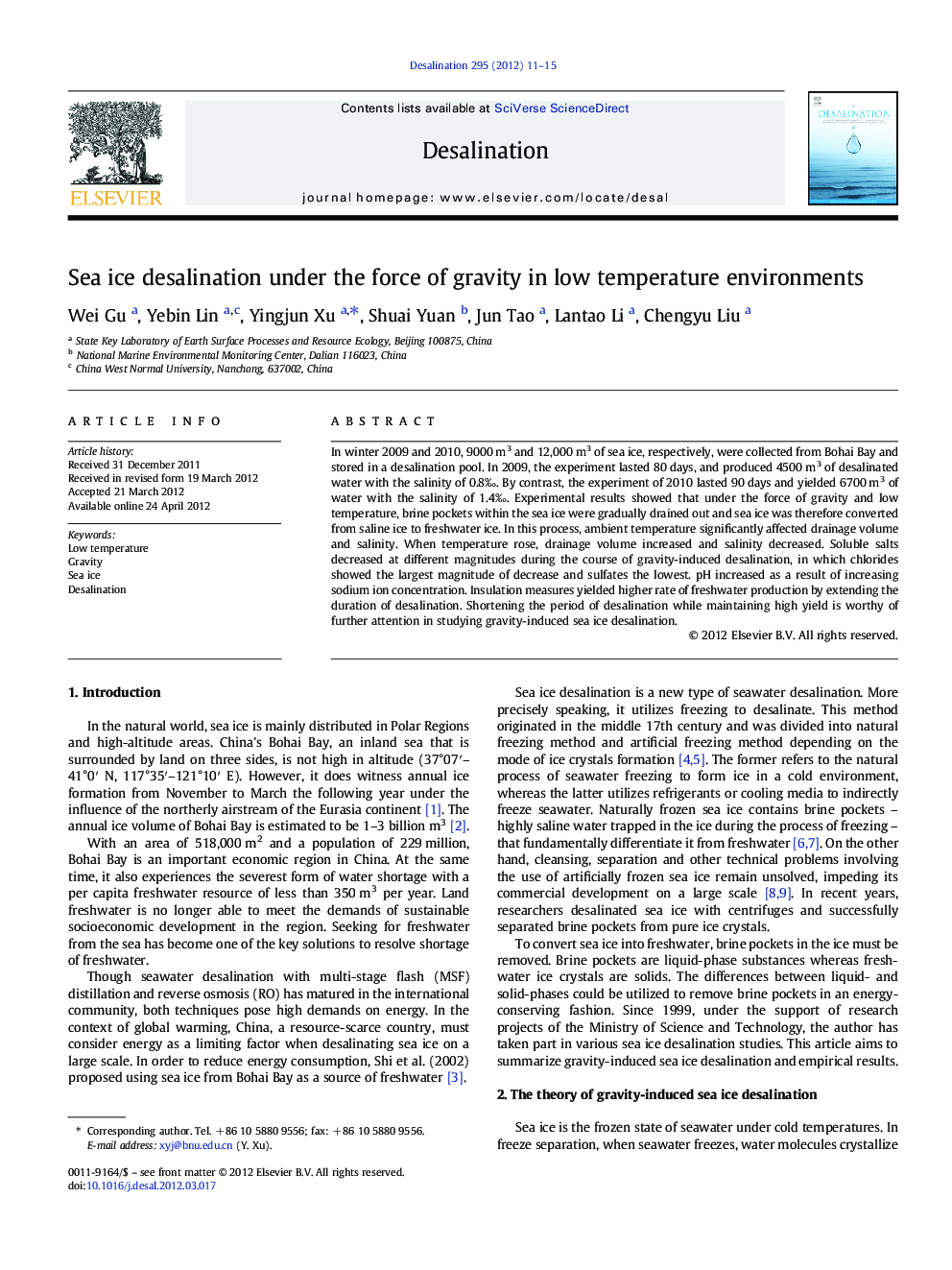| Article ID | Journal | Published Year | Pages | File Type |
|---|---|---|---|---|
| 624339 | Desalination | 2012 | 5 Pages |
Abstract
In winter 2009 and 2010, 9000Â m3 and 12,000Â m3 of sea ice, respectively, were collected from Bohai Bay and stored in a desalination pool. In 2009, the experiment lasted 80Â days, and produced 4500Â m3 of desalinated water with the salinity of 0.8â°. By contrast, the experiment of 2010 lasted 90Â days and yielded 6700Â m3 of water with the salinity of 1.4â°. Experimental results showed that under the force of gravity and low temperature, brine pockets within the sea ice were gradually drained out and sea ice was therefore converted from saline ice to freshwater ice. In this process, ambient temperature significantly affected drainage volume and salinity. When temperature rose, drainage volume increased and salinity decreased. Soluble salts decreased at different magnitudes during the course of gravity-induced desalination, in which chlorides showed the largest magnitude of decrease and sulfates the lowest. pH increased as a result of increasing sodium ion concentration. Insulation measures yielded higher rate of freshwater production by extending the duration of desalination. Shortening the period of desalination while maintaining high yield is worthy of further attention in studying gravity-induced sea ice desalination.
Related Topics
Physical Sciences and Engineering
Chemical Engineering
Filtration and Separation
Authors
Wei Gu, Yebin Lin, Yingjun Xu, Shuai Yuan, Jun Tao, Lantao Li, Chengyu Liu,
